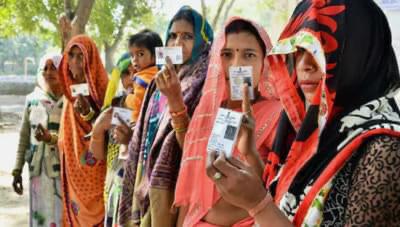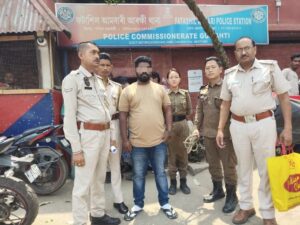Key vote? Women surpass men in State polls turnout

New Delhi(Akash Rabindra Shukla): Women power has held sway in the current elections in five states, with their turnout surpassing that of men in Uttarakhand and Goa, in the first phase in Manipur, and the fourth phase onwards in Uttar Pradesh. In Punjab, women voters were almost neck-and-neck with men, recording a deficit of a mere 0.08 percentage points as compared to the male turnout.
Women’s lead over men in terms of turnout widened with each passing phase in UP after February 20, with the sixth phase witnessing 62.62 percent polling percentage among women as against 51.03 percent among men. Women electors’ lead over men increased from a mere 0.01 percentage points to 3.89 in the fifth phase and an impressive 11.59 percentage points in the sixth. However, the female turnout in all the six phases in UP has been lower than in 2017.
All eyes are now on the seventh and final phase in UP to see if the trend continues and whether it will help a particular contestant.
Women had started asserting their identity as independent and decisive vote-bank long ago in southern India, having swayed mandates in favour of film star-turned-politicians MGR and NTR in Tamil Nadu and Andhra Pradesh respectively. Over the past decade or so, women have come into their own even in north Indian states like Bihar where they are said to have shaped Nitish Kumar’s win in 2010. Has the trend of them emerging as an independent voting category now also travelled to UP, where deep-rooted patriarchy forced women for long to vote as per the diktat of the males in the family.
Political scientist and fellow at the Centre for Policy Research (CPR) Rahul Verma says that the rise in participation of women — largely visible since 2014 or even earlier — “reflects not really their support for any party or politician but a social change driven by the rise in their awareness and literacy levels and the Election Commission’s focus on cleaning up the electoral rolls and making poll arrangements more conducive for women”.
However, he also introduced a caveat. “Any significant gap between female and male voter turnout can also be explained by the migration pattern among males (for work),” Verma told TOI.
Among the various initiatives taken by the EC to raise women’s participation in these polls include associating more women as polling booth officials; setting up all-women-managed polling stations; crèche facility at polling stations; and ensuring ease of registration with women block level officers motivating women in their own socio-cultural milieu. An EC officer said replacing the ballot paper with EVMs has brought out more women as they offer them a safe environment at the polling station. Also, reservation for seats for women in local bodies has encouraged more women to join the political process even as a voter.
Compared with the 2017 polls, overall voter turnout fell in Punjab (from 77.4 percent to 71.95 percent), Uttarakhand (65.56 percent to 65.37 percent) and Goa (81.27 percent to 79.61 percent) but rose in Manipur Phase 1 (85.9 percent to 88.6 percent). In UP, overall turnout was lower than 2017 in phases 1, 2 and 6 but marginally higher in phases 3, 4 and 5.
Interestingly, the third gender turnout saw a significant improvement to 88.89 percent in Goa, 81.1 percent in Manipur, from 23.61 percent to 38.79 percent in Punjab, from 8.65 percent to 25.35 percent in Uttarakhand and across all phases in UP.
The big decline in overall turnout and particularly female turnout in Punjab (from 78.16 percent in 2017 to 71.91 percent) has political scientists like Verma still looking for answers.
The difference between male and female turnout has been most striking in Uttarakhand, with women clocking 67.2 percent turnout as against 62.6 percent males. Goa also saw a 80.96 percent female voter turnout against 78.19 percent poll percentage for men.
The first phase of polling in Manipur on February 28 had 89.94 percent of the women electorate coming out to vote as against 87.2 percent men. In 2017, 87.99 percent of the women electors had voted.






